Home / All Recipes / Japanese / Matcha Steamed Buns
Matcha Steamed Buns
Fluffy and soft Japanese matcha steamed buns using rice flour so these steamed buns are gluten-free, on top of being delicious, and also not too sweet.
Growing up in Asia, steamed buns, steamed cakes, and steamed dessert is the norm. Most households don’t own any oven, instead we have big multi-tiered steamers and prepare a lot of steamed food.
For Japanese food lovers and matcha lovers, you are going to love this Japanese matcha steamed buns. These are super easy and fast to prepare, and then into the steamer for about 12 minutes. They are light and fluffy, and I love these not too sweet steamed buns with my afternoon tea/coffee. ♥
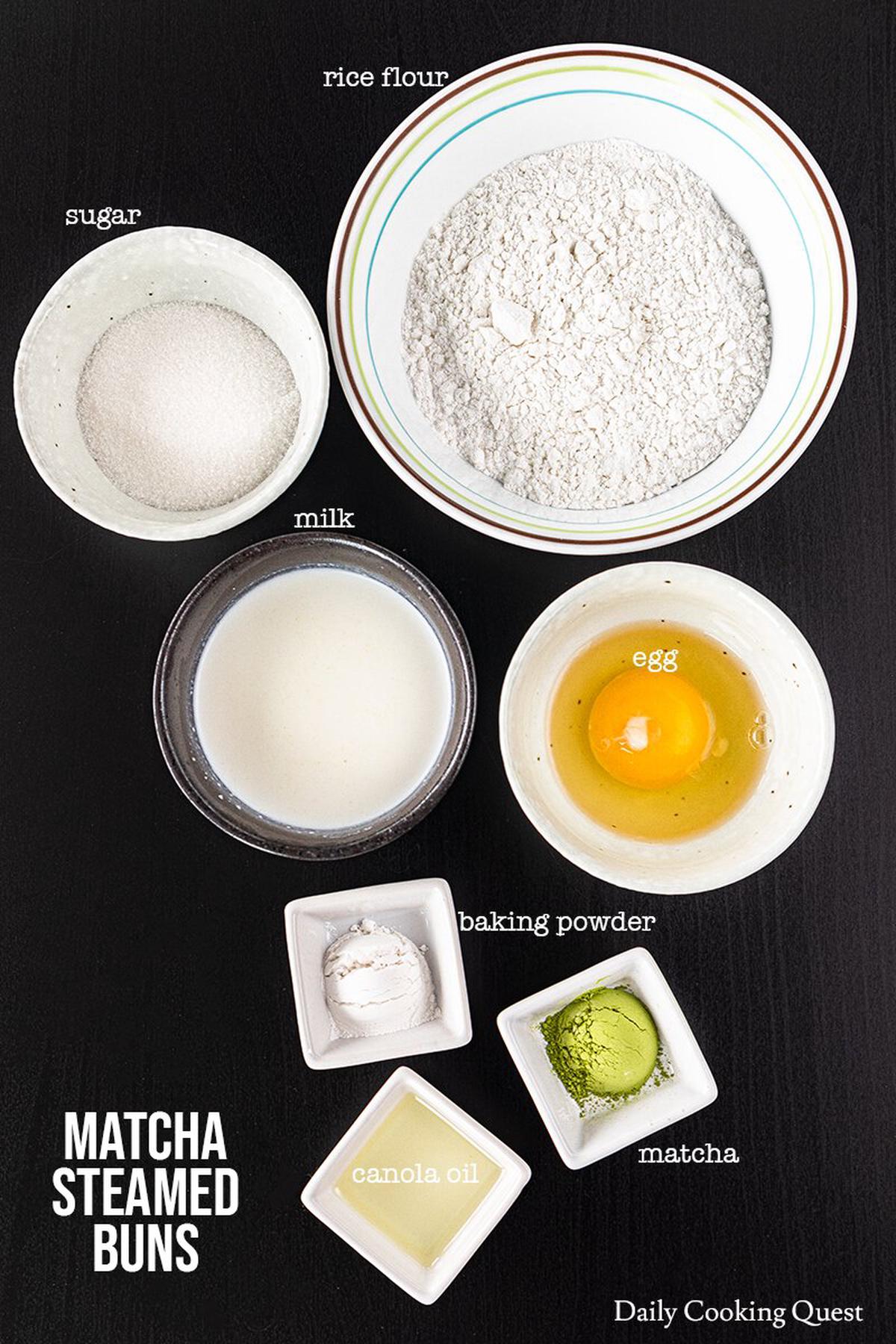
Matcha (Japanese green tea powder)
From the title alone, you know you will need to procure some matcha (Japanese green tea powder). Since this is for baking, I usually use culinary grade matcha.
If you need a recommendation, you can use what I usually use, which is Maeda-En culinary grade matcha. Another good option is Ito En matcha for those with Costco membership since you can get this huge packet for about $20+.
But, as good as the Costco deal sounds, only do this if you plan to cook/bake/drink matcha often, since the life span of matcha is actually pretty short since the powder tends to loose its fragrance and bright green color overtime due to oxidation once you open the packet.
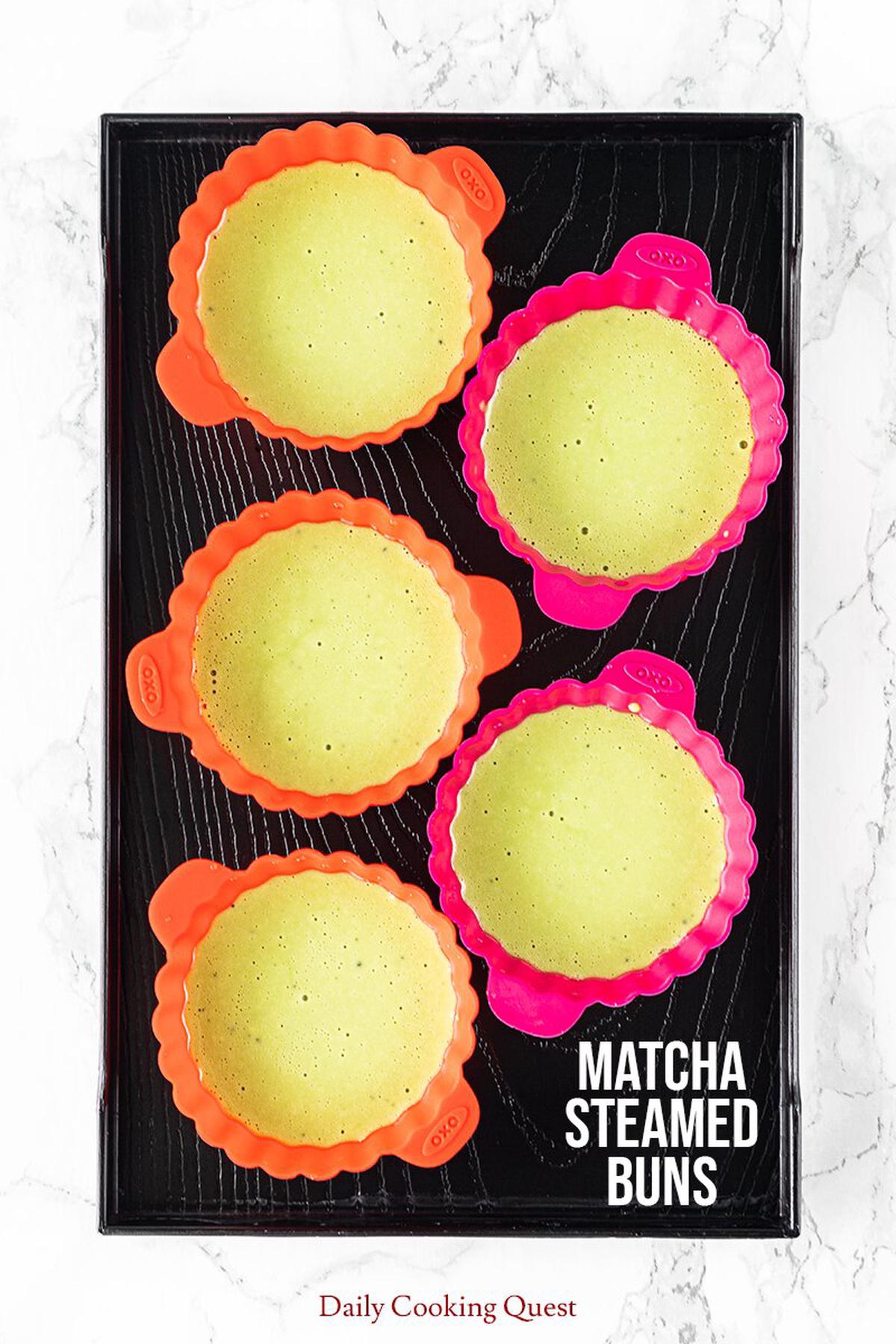
Rice flour
For those who needs gluten-free dessert, this matcha steamed buns might become your new favorite, since we are going to use rice flour instead of all-purpose flour.
I always use Erawan brand rice flour when making these steamed buns. In fact, for all of my recipes that call for rice flour, this is the only brand I use when I am in the States.
If you want to use other brands, especially those not originated from Asia, do so at your own risk since I have no experience with those.
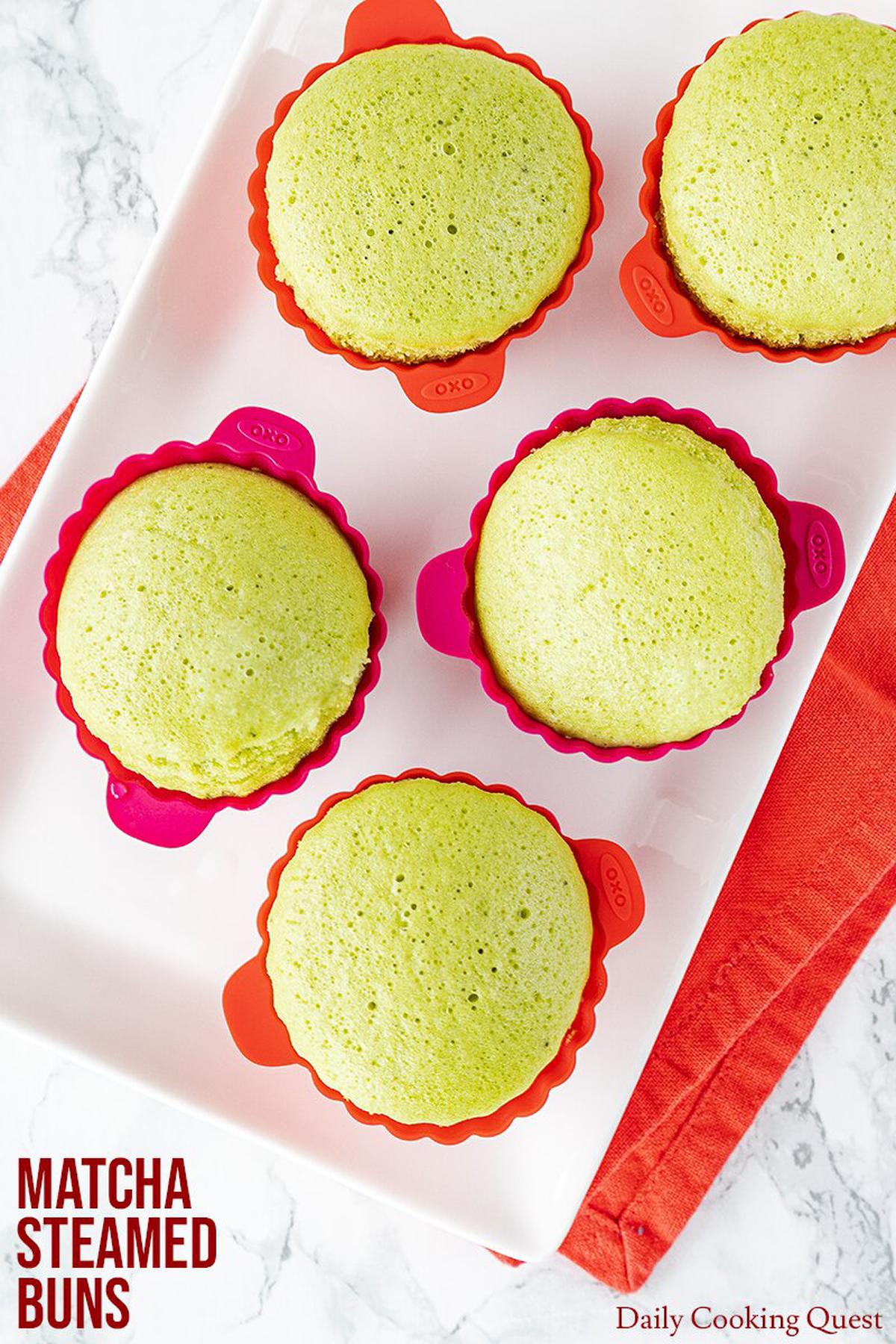
Silicon baking cups
I steam these matcha steamed buns in silicon baking cups. This recipe doesn’t yield a whole lot of steamed buns, only 5, which is about the perfect amount of steamed buns when I am having tea for two with my hubby. :)
If you have a bigger steamer, you can also steam them in a 6 cup muffin pan, but be sure to use cupcake liners so the steamed buns doesn’t stick to the pan.

How to steam the matcha steamed buns
You need a steamer to make steamed buns, and here are my tips for successfull steaming:
- Be sure the bottom pot has at least one inch of water since we don’t want the water the dry out mid steaming.
- Be sure the water is already boiling and there is plenty of steam before we start steaming the buns.
- Be sure to set the stove hot enough that steam should always be visible while steaming. I usually set mine to medium high.
- For those not using bamboo steamers, be sure to wrap the steamer lid with a kitchen towel to reduce the chance of water condensation drops on the steamed buns when you open the steamer lid. Any water from the lid that drops on the steamed buns will create wrinkly buns, and those spots will turn darker and chewier, so we really want to avoid that.

Matcha Steamed Buns
Ingredients
- 100 gram rice flour (Indonesian: tepung beras)
- 1 teaspoon baking powder
- 1 teaspoon matcha (green tea powder)
- 1 egg
- 50 gram sugar
- 80 ml milk (I've tried with cow milk, soy milk, and almond milk)
- 1 tablespoon canola oil
Instructions
- Prepare a steamer over medium high heat.
- Sift together rice flour, baking powder, and matcha. Set aside.
- In a mixing bowl, mix together egg and sugar until sugar has fully dissolved with an electric mixer. Add milk and canola oil, continue mixing until well combined. Then add the sifted dry ingredients from step 2 and keep mixing until well combined.
- Pour the batter into silicon baking cups to fill each cup about 70% full, you should need about 5 standard size muffin cups. Steam for 12 minutes, then turn the heat off, and let the buns sit in the hot steamer for another 5 minutes.
- Carefully open the steamer lid so no water drops on the buns, remove the steamed matcha buns, and serve immediately with tea or coffee.


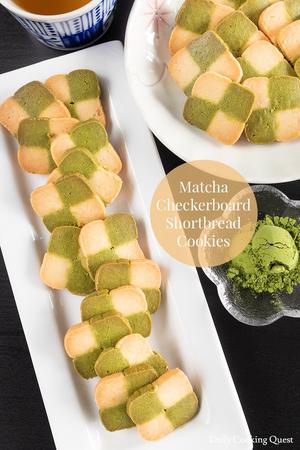
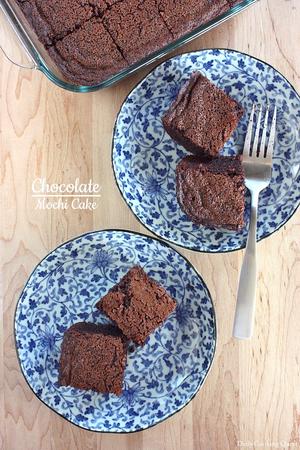
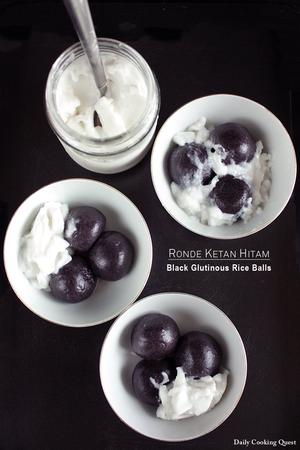
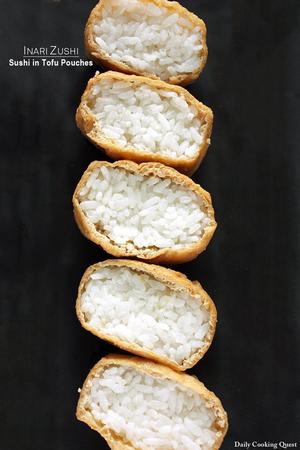
Comments
So easy I HAVE to try it! Thanks!
Hey Anita , would like to ask you, if I use all purpose flour as you mentioned, the texture won't be chewy?
Hi Chris, I have no idea if they will turn chewy or not if using all-purpose flour instead of rice flour. If you do try, please let me know how they turn out. :)
Hi Anita, may I change the matcha powder to chocolate powder.
I have never tried with chocolate (cocoa) powder, but I don't see why it will fail. That said, I am not so sure if simply using 1 teaspoon of cocoa powder will give enough chocolate color and chocolate flavor. If you do try, will you let me know how it goes?
Time to explore Japanese cuisine even more - these buns look so yummy. Thank you so much for sharing all your insights! :-)
These were so light and fluffy and a lot easier than I initially thought! Delish!
Yes, for those without an electric mixer, a hand held whisk works pretty well too to mix the batter.
This recipe is perfect! I bought a really nice 3 tiered steaming pan at an Asian market and have never used it! I love these matcha steamed buns!
Way to go Pam. Time to make steamed buns indeed! But you probably only ended up needing 1 tier for this recipe, am I right? :)
Love this creative recipe! So tasty!
These sound so flavorful. I really like how light and airy they look too.
I used 1 to 1 baking flour for these instead of pure rice flour. This mix has tapioca starch and xanthan gum to mimic wheat flour in baking recipes. They did come out very chewy. Still tasted amazing! Just chewy. So Id say definitely go w rice flour because they were fluffy unfortunately.
Yes, my recipe uses rice flour, and the steamed buns always come up fluffy and not chewy. It is best to find another recipe if you want the steamed buns to be chewy. :)
Well I got the rice flour this time. Pure rice flour. However they are not rising well. Not sure what I did wrong :/
Hi Joy, I'm so sorry your steamed buns didn't rise well. Either we are using different brands of rice flour (I use Erawan brand) and they behave differently, or your baking powder is nearing its expiration date and is losing its power.
Can you make sure your baking powder is still active? You can mix 1⁄2 teaspoon of baking powder with 1⁄4 cup of boiling water. If it bubbles vigorously, it’s good to use, otherwise, please use a new can of baking powder.
Hi, my steamed buns rise & 'erupted/cracked' into cute little dense buns. I hand-whisked the egg & sugar and used equal amount of pandan juice instead of milk & matcha powder. Is that why the buns are not fluffy or airy as they should be?
Using pandan juice instead of milk and matcha should be fine. There are many reasons why steamed buns may become dense instead of fluffy, such as using expired/closed to expired baking powder, or over-mixing dry ingredients (the last portion of step 3), or even over-steaming the steamed buns. If you fill the cups below 70%, the steamed buns shouldn't crack, but they can crack the cup is filled with batter to 80-90% full.
Hi I made these w chocolate powder. Is it suppose to be a little dense? I’m not sure if it’s because I reduced sugar to 40g. Still a lil sweet for me though. Very delicious.
Hi Wei, thanks for trying the recipe and for sharing your chocolate version. I, too, think they are denser compared to Chinese huat kueh.
These look great! I only have glutinous rice flour- would that also work? If not, do you have some recipes with matcha and glutinous rice flour :)
Hi Elena, unfortunately, you can't substitute rice flour with glutinous rice flour for this recipe. If you love old school snack, you can try my mochi sesame seeds recipe. Add 1 tablespoon of matcha to the glutinous rice flour and whisk together really well, and follow the rest of the recipe as is.
Another idea is if you are familiar with Chinese tang yuan, you can always add some matcha to the glutinous rice flour when you make the tang yuan. :)
Hi Anita, thanks for sharing this recipe... unfortunately my bun become dense.... is baking powder need to use double action or normal baking powder will do? Or I'm over mix? Please advice. Thanks in advance.
Hi Sally, the baking powder should be the double acting type. Since the batter is just rice flour, there really shouldn't be any risk in over-mixing. Other possibilities for the dense buns might come from any water condensation that drips onto the buns, or if the heat from the steam is not hot enough during steaming.
Anita, susunya boleh ganti sama sama santan gak? Alergi dairy anakku. Hasilnya gimana ya? 😁
Hi Lily, bisa juga harusnya. Tapi kalo santan kalengan, mungkin diencerin dulu yah. Saranku sih 40 ml santan kaleng dan 40 ml air, dicampur rata, baru dipakai. Kalo santan encer yang peres sendiri, bisa langsung dipakai, soalnya sudah cukup encer. :)
Very easy recipe! I just found out yesterday and this morning I made them with coconut milk (my child has multiple food allergies) as Anita said to mix 40 ml water and 40 ml cooking coconut milk (not the beverage). I also reduced the sugar to 40 grams and added 1/4 tsp of salt. The cake has rose very well, they even have cracked on top (just like what I remember when I was a child back in Indonesia). They have very nice and soft texture. Thanks for the recipe! Great job, Anita!
Hi Anita, Can I use pandan extract (based on your recipe) instead of matcha powder? Thank you
Hi Syarifa, it should be possible. Just make sure that the total liquid is still 80 ml. :)
Leave a comment